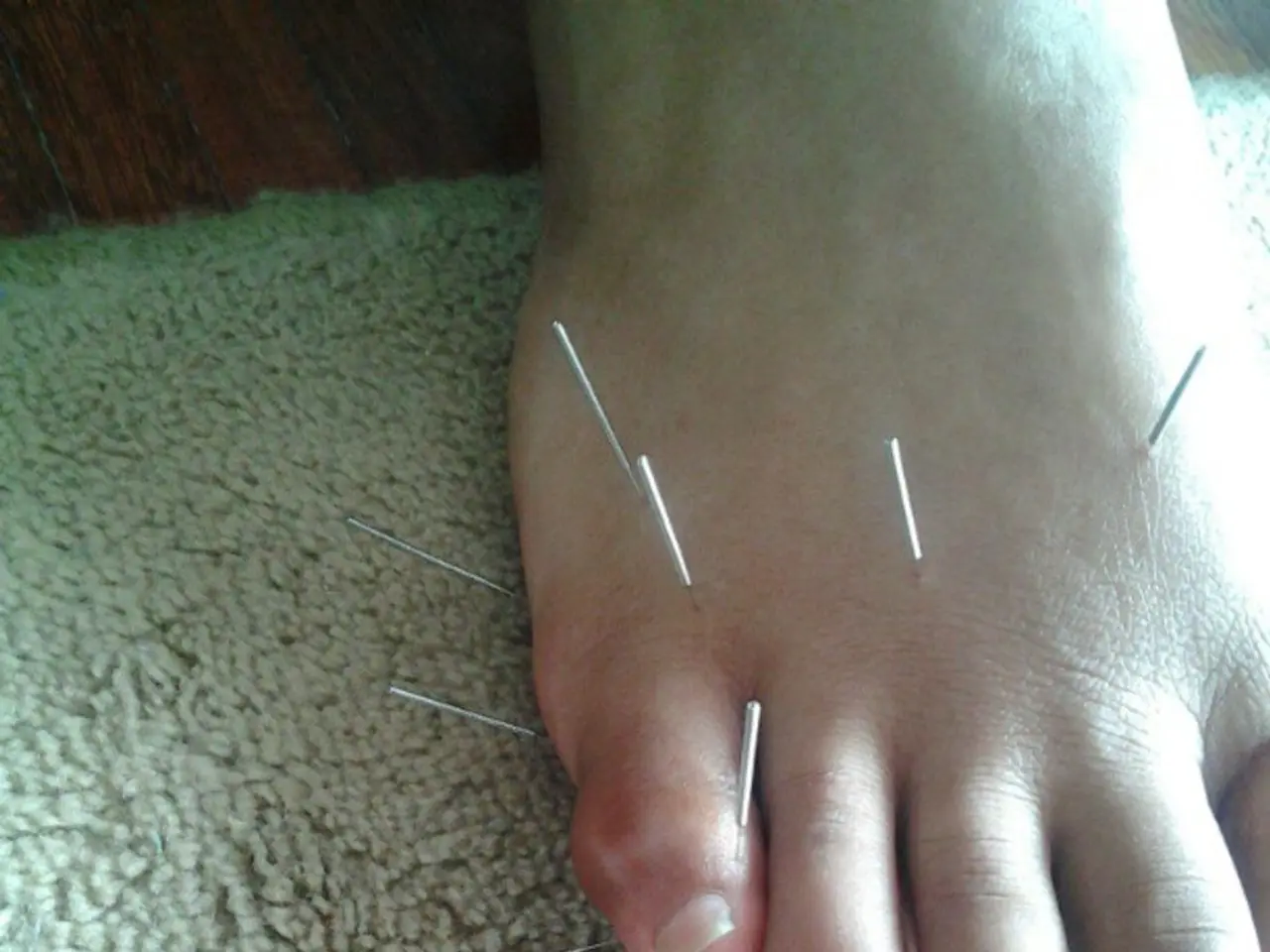Thrombosis-related condition known as May-Thurner Syndrome: Causes, remedies, and healing progress
May-Thurner syndrome, also known as Iliac Vein Compression Syndrome, is a lesser-known condition that affects the blood flow in the leg. This syndrome occurs when the right iliac artery compresses the left iliac vein, leading to increased venous pressure and the risk of deep vein thrombosis (DVT) in the left leg [2][3].
The primary complication of May-Thurner syndrome is DVT. If left untreated, these blood clots can cause serious health issues, including pulmonary embolism if a piece of the clot breaks off and travels to the lungs [3]. Other long-term complications include chronic venous occlusion, post-thrombotic syndrome, and an increased risk of recurrent thrombosis [4][5].
Diagnosing May-Thurner syndrome typically involves medical imaging tests such as ultrasound, CT, MRI, venography with intravascular ultrasound [6]. Treatment often involves anticoagulation therapy, stenting, or other interventions to prevent further clotting and maintain venous patency [3][4].
In some cases, surgical removal of blood clots may be necessary, such as when stenting has not produced a good outcome. Symptoms of May-Thurner syndrome, if present, can include tightness, hyperpigmentation, swelling, venous ulcerations, and telangiectasias in the left leg [6].
Anticoagulation involves taking medications to prevent the formation of blood clots inside the narrowed vein. Examples of these medications include Warfarin, heparin, fondaparinux, apixaban (Eliquis), and rivaroxaban (Xarelto) [7].
It's important to note that May-Thurner syndrome is not the cause of all DVTs, but some evidence suggests that the incidence may be higher [8]. Risk factors for May-Thurner syndrome include female sex, recent childbirth, dehydration, use of oral birth control, scoliosis, prolonged immobility following surgery, and conditions that cause a tendency to develop blood clots [9].
Treatment for May-Thurner syndrome may involve monitoring for people with no symptoms and a low risk of DVT, or inserting a stent to widen the left iliac vein and prevent blood from pooling in the legs. For those with DVT, doctors may recommend catheter-directed thrombolysis to break up the blood clot and allow the insertion of a stent [1].
However, catheter-directed thrombolysis carries a risk of bleeding and is not suitable for individuals with internal bleeding, recent stroke, or head trauma [1].
If symptoms of DVT or pulmonary embolism occur, immediate medical attention should be sought. Symptoms of DVT can include swelling, pain, and warm skin in the affected leg, while pulmonary embolism is characterized by chest pain, difficulty breathing, and coughing up blood [10].
In conclusion, May-Thurner syndrome is a condition that can lead to serious complications if left untreated. Understanding the risks and symptoms can help individuals seek prompt medical attention and manage the condition effectively.
- Beyond May-Thurner syndrome, other vascular diseases and chronic diseases such as other neurological disorders, mental health issues, skin care concerns, and various other health and wellness conditions also need constant attention and appropriate therapies and treatments.
- Nutrition, fitness, and exercise play a significant role in maintaining overall health and wellness, and their importance cannot be overstated in managing chronic diseases like May-Thurner syndrome.
- Research in science continues to advance our understanding of various medical conditions, including May-Thurner syndrome, and this has led to the development of new treatments, such as the use of CBD, which may provide additional therapeutic options in managing these conditions.
- In addition to anticoagulation therapy, medical-conditions like May-Thurner syndrome may require lifestyle modifications such as maintaining a balanced diet, regular exercise, and proper skin care to ensure optimal health and prevent complications.
- If one is diagnosed with May-Thurner syndrome or any other health condition, it is essential to follow the treatments and therapies prescribed by healthcare professionals and establish open communication to effectively manage the condition and avoid potential risks or complications.
- Comprehending one's health status, including understanding the risks and symptoms of conditions like DVT, is fundamental to maintaining good health and seeking prompt medical attention when necessary, whether due to May-Thurner syndrome or other health concerns.




